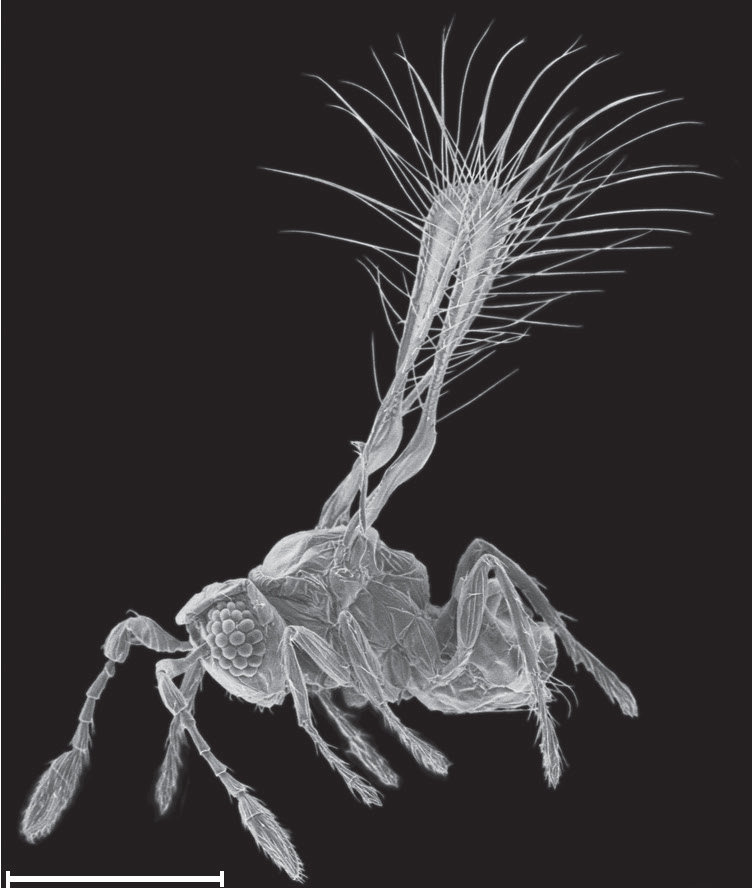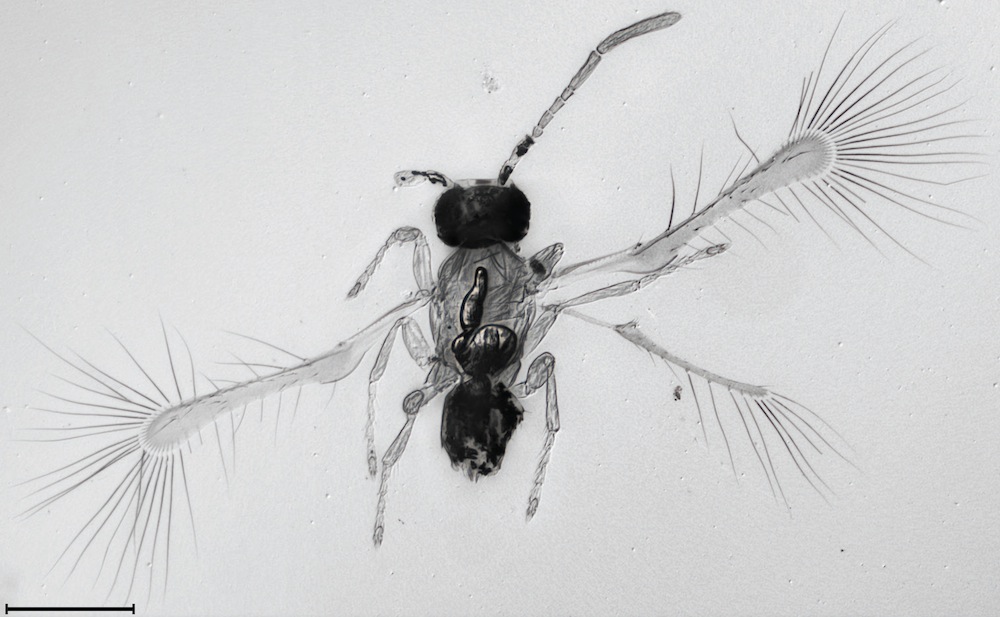New 'Fairy' Insect Is Mind-Blowingly Small

A new species of tiny fly named after the fairy in "Peter Pan" is mind-blowingly miniscule, with delicate wings trimmed in fringe.
Tinkerbella nana is a newly discovered species of fairyfly from Costa Rica. Fairyflies are a type of chalcid wasp, and almost all are parasites, living on the eggs and larvae of other insects. It's a gruesome way to live, but it makes fairyflies useful for farmers, who sometimes import them to control nasty pests.
Many fairyflies are extraordinarily tiny, including Kikiki huna, a Hawaiian species that grows to be only 0.005 inches (0.13 millimeters) long — about the diameter of the tip of a fine drawing pen. This makes them tough to find, but researchers led by John Huber of Natural Resources Canada conducted their search by seeking out insect eggs in leaf litter, soil and on plants in the Costa Rican province of Alajeula.
There, they found specimens of T. nana, none of which were more than 250 micrometers in length. One micrometer is a thousandth of a millimeter.

Under the microscope, these teeny-tiny insects reveal fine detail, particularly their long, skinny wings, which terminate in hairlike fringe. This wing shape may help ultra-small insects reduce turbulence and drag when they fly, a feat that requires beating their wings hundreds of times per second.
Researchers don't know how small insects can get, Huber said.
"If we have not already found them, we must surely be close to discovering the smallest insects," he said in a statement. The researchers published their discovery today (April 24) in the Journal of Hymenoptera Research.
Sign up for the Live Science daily newsletter now
Get the world’s most fascinating discoveries delivered straight to your inbox.
Follow Stephanie Pappas on Twitter and Google+. Follow us @livescience, Facebook & Google+. Original article on LiveScience.com.

Stephanie Pappas is a contributing writer for Live Science, covering topics ranging from geoscience to archaeology to the human brain and behavior. She was previously a senior writer for Live Science but is now a freelancer based in Denver, Colorado, and regularly contributes to Scientific American and The Monitor, the monthly magazine of the American Psychological Association. Stephanie received a bachelor's degree in psychology from the University of South Carolina and a graduate certificate in science communication from the University of California, Santa Cruz.










